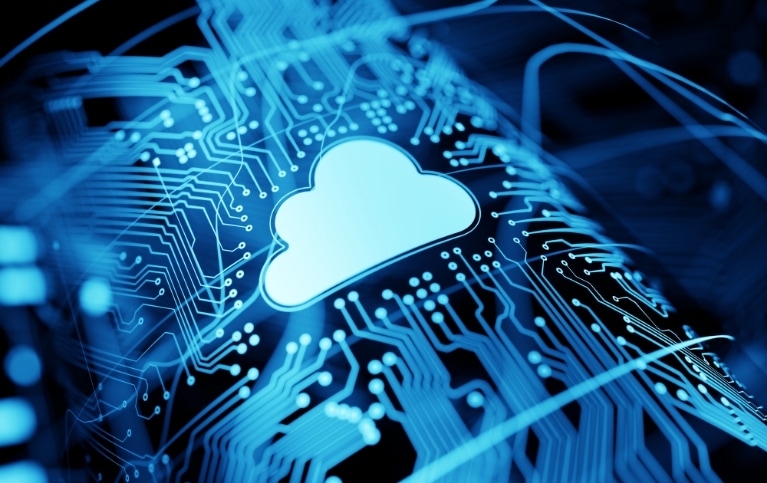Servers are the foundational infrastructure that runs a business’s core computing functions, from email and databases to file storage and applications. For years, physical servers were the only option for businesses, but the rise of cloud computing has introduced a new alternative. While both physical and cloud servers perform similar functions, they differ significantly in terms of operation, maintenance, and cost.
Let’s dive deeper into the comparison between cloud servers and physical servers to determine which one is right for your business.
Understanding physical and cloud servers
To make a decision between physical and cloud servers, it’s important to first understand the fundamental differences between the two.
Physical servers are computing hardware that are typically stored and maintained on premises in a company’s data center. They supply the necessary processing power, storage, and network connectivity to run applications and store data. Depending on the size of the business and their computing needs, physical servers can range from a standalone dedicated server to multiple servers in a rack.
Cloud servers, on the other hand, are virtual servers that are hosted on the infrastructure of a cloud services provider. They are accessed remotely through an internet connection, and users pay for only the computing resources (e.g., cloud storage, memory, processing power) they need. Popular cloud services providers include Microsoft Azure and Amazon Web Services.
What are the pros and cons of physical servers?
Physical servers refer to what most businesses traditionally have used for decades because they offer a host of benefits. For one, physical servers provide more control over your computing environment, which includes hardware, software, and data. Such a level of control is beneficial from a data security perspective. Additionally, having servers so close to the business can result in faster access speeds and better performance for certain applications.
However, cost and maintenance are massive downsides for physical servers. The upfront cost of acquiring and implementing server hardware can run upwards of $10,000, depending on the size and complexity of the server. Then, there are server maintenance costs, which include hardware upgrades, software updates, backups, and technician salaries. Plus, scaling up or down can be difficult, as the business would need to purchase and configure additional servers for increased capacity. The financial burden alone can be significant for smaller businesses that may not have the budget or resources to support an on-premises server infrastructure.
What are the pros and cons of cloud servers?
Cloud servers are a much more accessible option for businesses since they offer the same functionalities as physical servers without the hefty upfront costs. With a cloud computing environment, there’s no need to invest in expensive hardware, and maintenance costs are generally lower since it’s the provider’s responsibility to ensure that servers are working efficiently. That also means cloud servers offer endless scalability. If a business needs additional data storage or processing power, they can simply upgrade their cloud plan.
However, there are some drawbacks to consider, primarily related to security and potential downtime. Since data is stored off site, there may be concerns about the safety and privacy of sensitive information. Also, if the internet connection goes down or the cloud provider experiences technical issues, it can disrupt business operations.
Which server is better for your business?
The best type of server ultimately depends on your organization’s priorities. Here are some criteria to consider when making your decision:
Cost effectiveness
If cost is your primary concern, cloud servers are the clear winner. They have a lower upfront investment since there’s no need to purchase and maintain server hardware. The subscription-based pricing of cloud servers also means businesses can better manage their budget and avoid unexpected costs associated with physical servers.
Growth
Cloud servers shine from a scalability standpoint, offering on-demand resource adjustments that can accommodate growth or seasonal fluctuations with ease. Businesses can increase or decrease server capacity as needed. Physical servers, however, require significant investment and time to scale up, as adding capacity means purchasing, installing, and configuring new hardware. For rapidly growing companies or those with variable needs, cloud solutions provide unmatched flexibility.
Performance and speed
When it comes to performance, physical servers typically have the upper hand. Since resources are dedicated solely to your business’s operations, physical servers offer faster, more consistent speeds without the risk of bandwidth competition. This can be particularly advantageous for companies handling large datasets or requiring instant access to data with minimal delays. Meanwhile, cloud servers depend on internet connectivity, which may introduce occasional latency issues.
Security
Security is often a priority in the server selection process, with physical servers offering a level of control that some companies find crucial. Since physical servers are managed on site, organizations have direct oversight of data security protocols, allowing for customization to meet specific security and compliance needs.
Conversely, a cloud server depends on the provider’s security measures, which are usually robust and industry-standard but may not fully align with the needs of highly regulated industries. It’s therefore important to thoroughly research the security practices of potential cloud providers before migrating to the cloud.
Innovation
Innovation is a key advantage for cloud servers, as they offer quick and frequent access to the latest technologies. Cloud providers continuously update and upgrade their platforms to meet evolving market demands, ensuring businesses stay at the forefront of technology.
In contrast, physical servers may lag in terms of innovation since adding new capabilities often requires costly hardware upgrades. Businesses using physical servers may also experience longer timelines to implement new technologies, as these changes typically involve procurement, installation, and configuration.
Accessibility
Cloud servers are king with respect to accessibility, as they can be accessed from any location with an internet connection. If businesses have remote workers, cloud solutions offer a seamless and secure way to share data and collaborate in real time. Those with physical servers can still enable remote access, but it often involves additional setup and security protocols,
Control and customization
Both options offer varying degrees of control and customization, but physical servers typically provide more hands-on management. Companies can customize the hardware and software according to their specific needs, making it easier to integrate with existing systems and applications — provided they have the necessary expertise and resources to do so.
With cloud servers, there is still some level of control and customization, but it’s limited to the tools and features provided by the cloud provider. This may hinder businesses with unique needs or those that require a high level of customization.
There are many factors to consider when choosing between a cloud server or a dedicated physical server. At Dynamic Solutions Group, we specialize in helping businesses make strategic IT choices that align with their unique goals. Contact us today to learn more about how we can guide your business to the optimal server solution.






